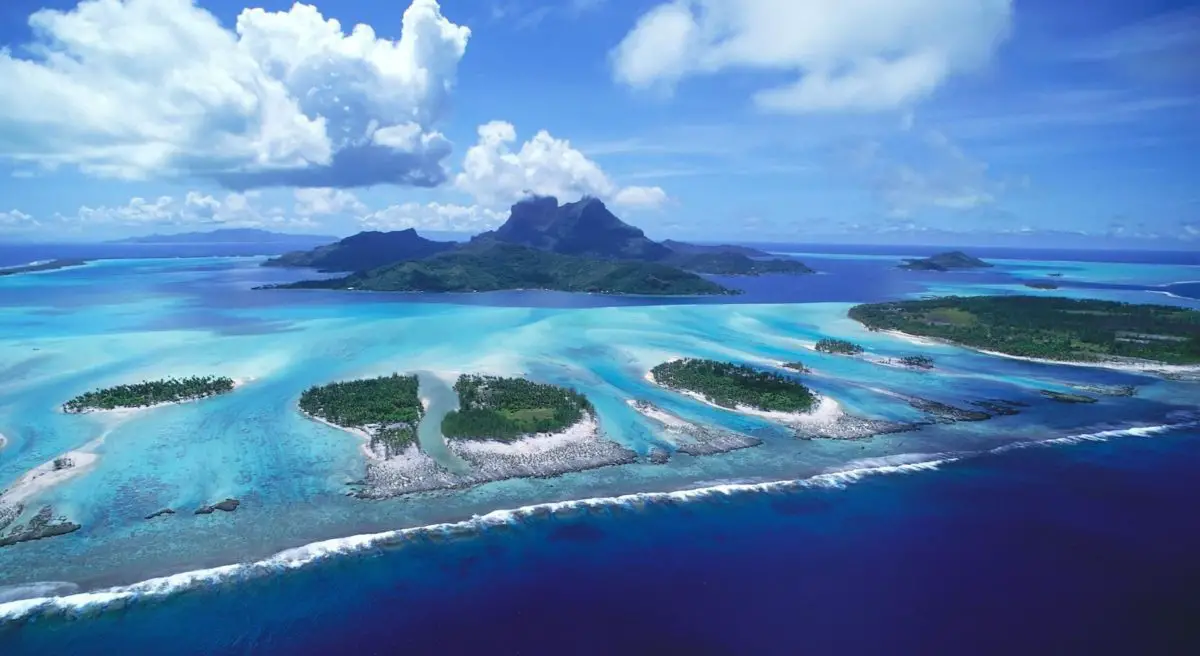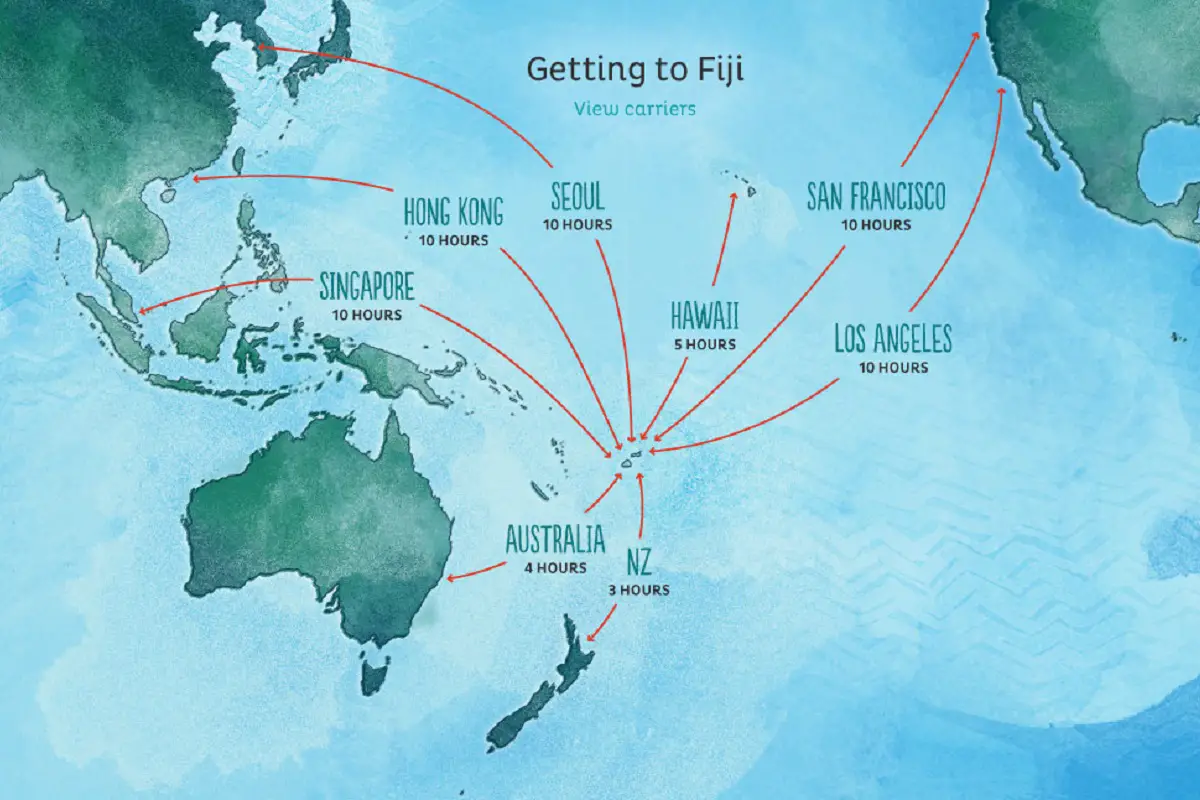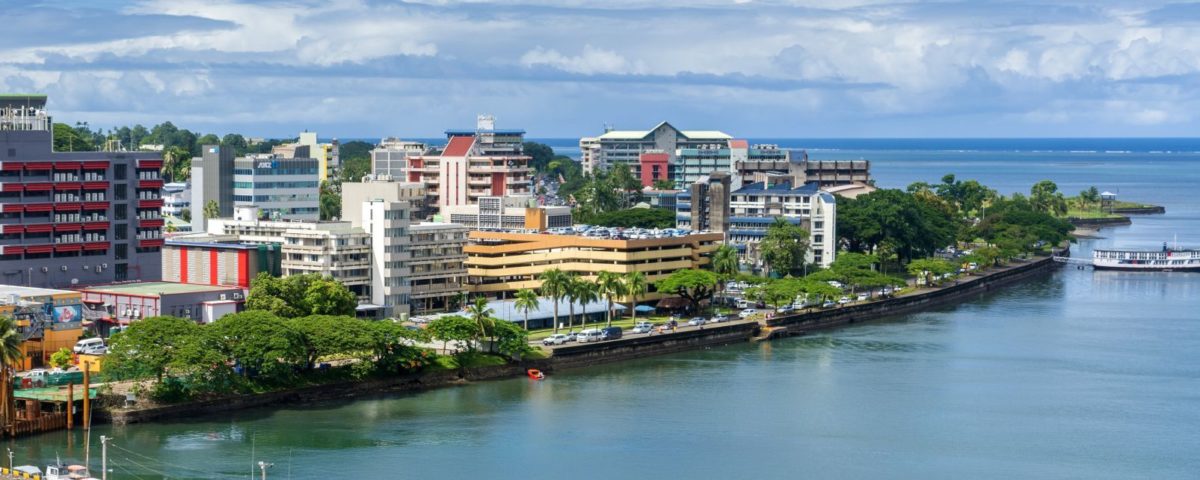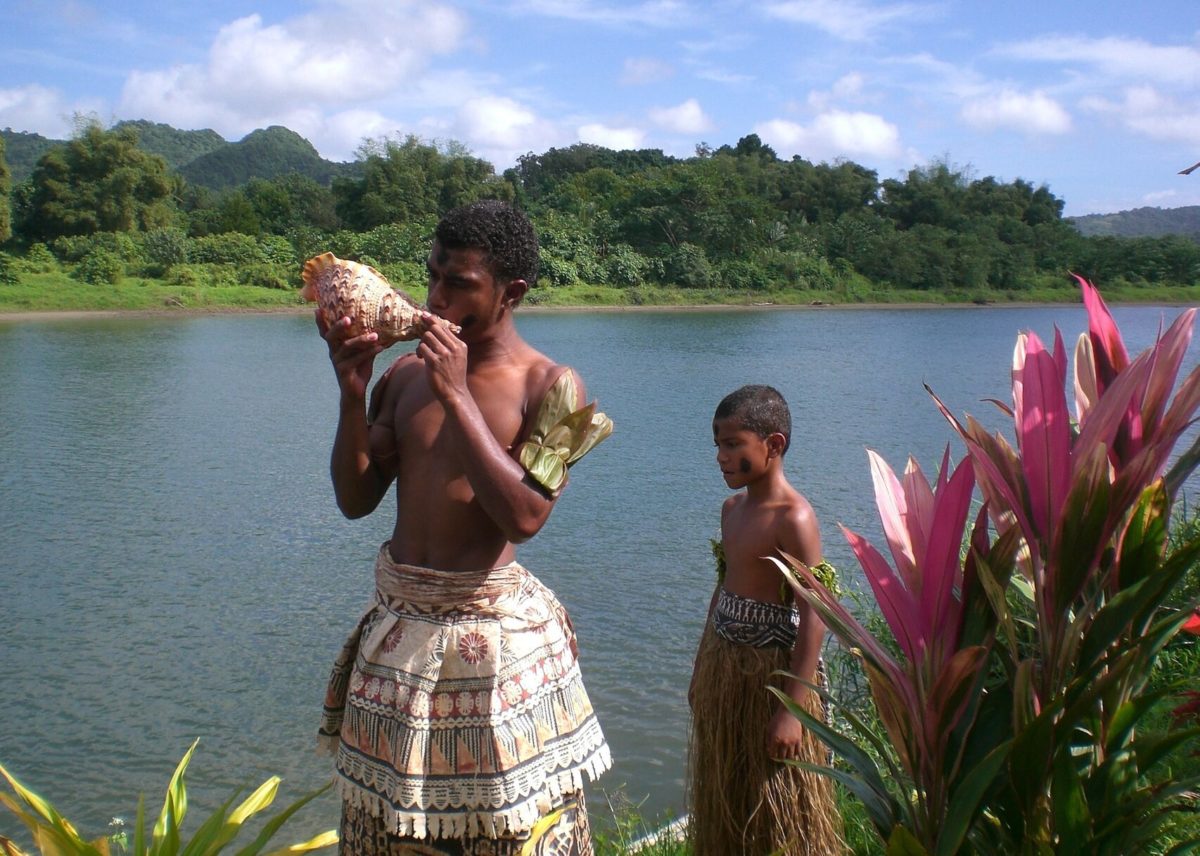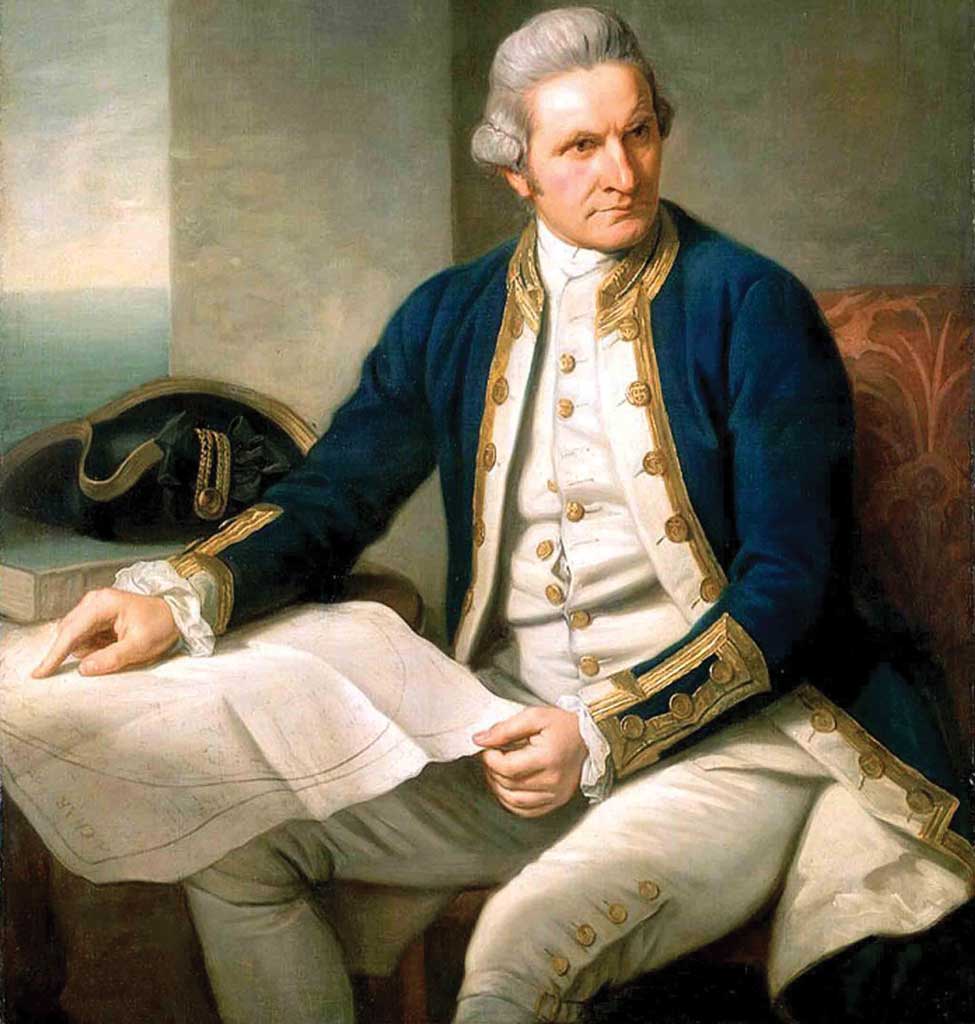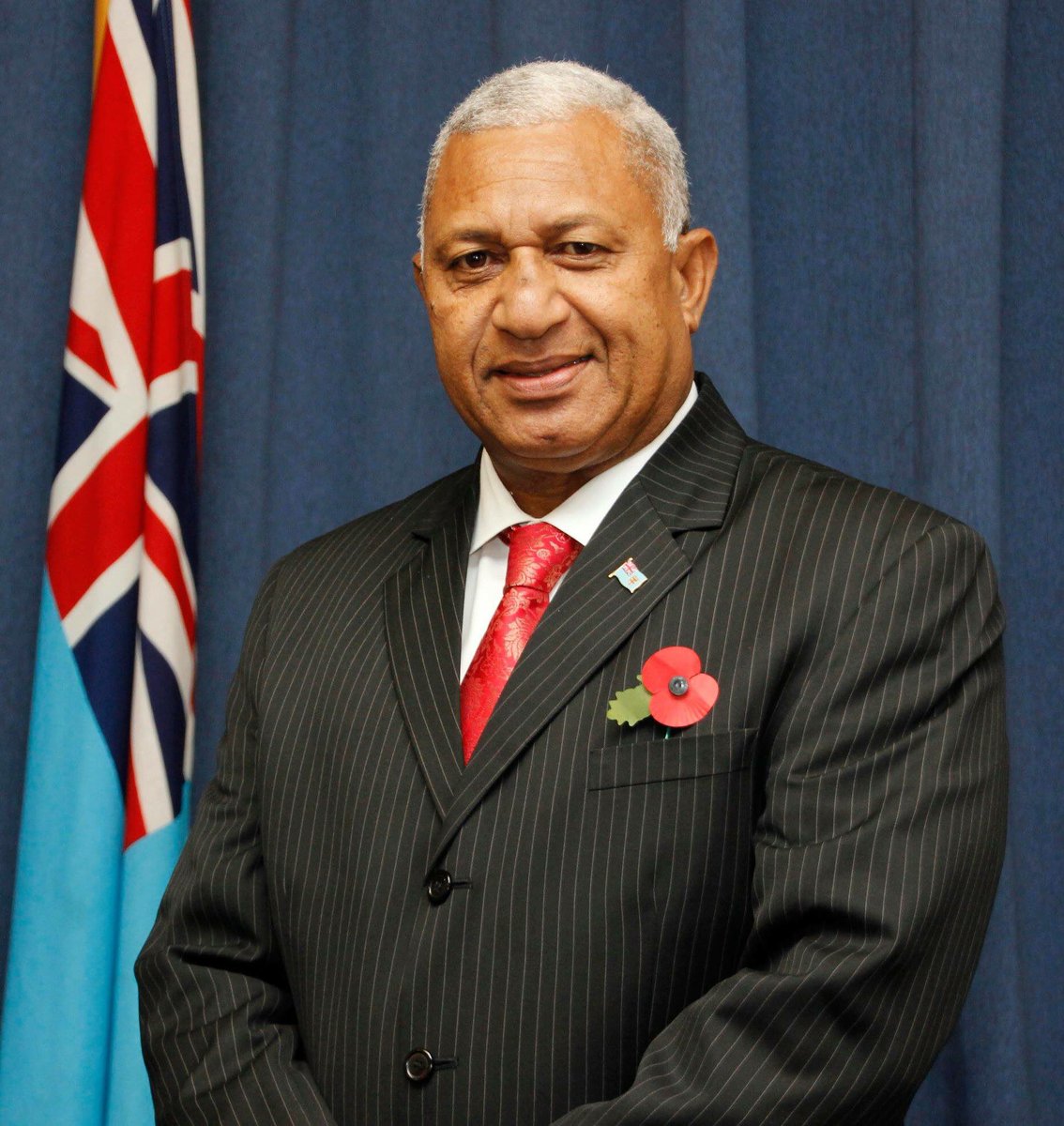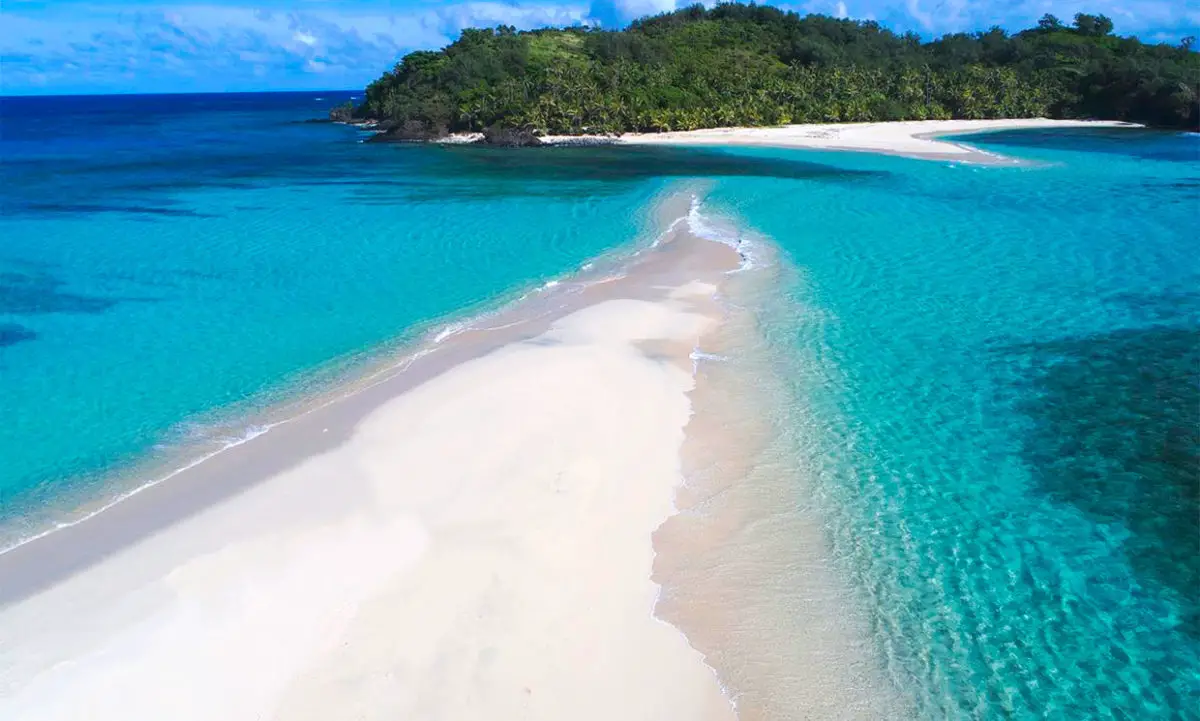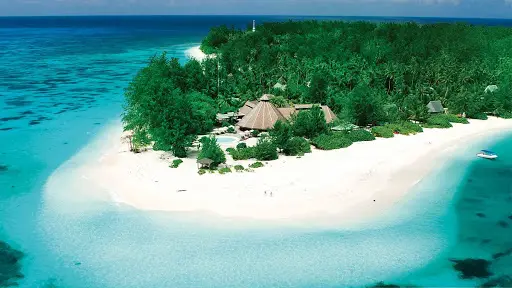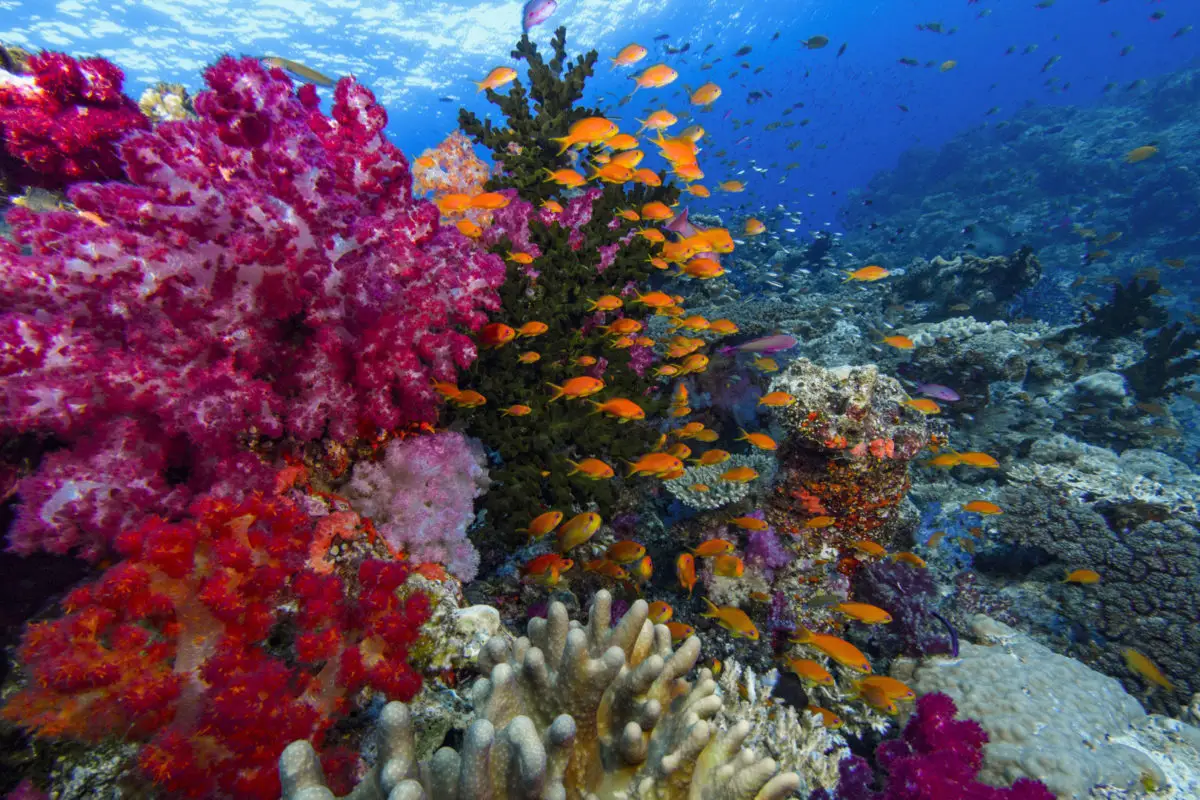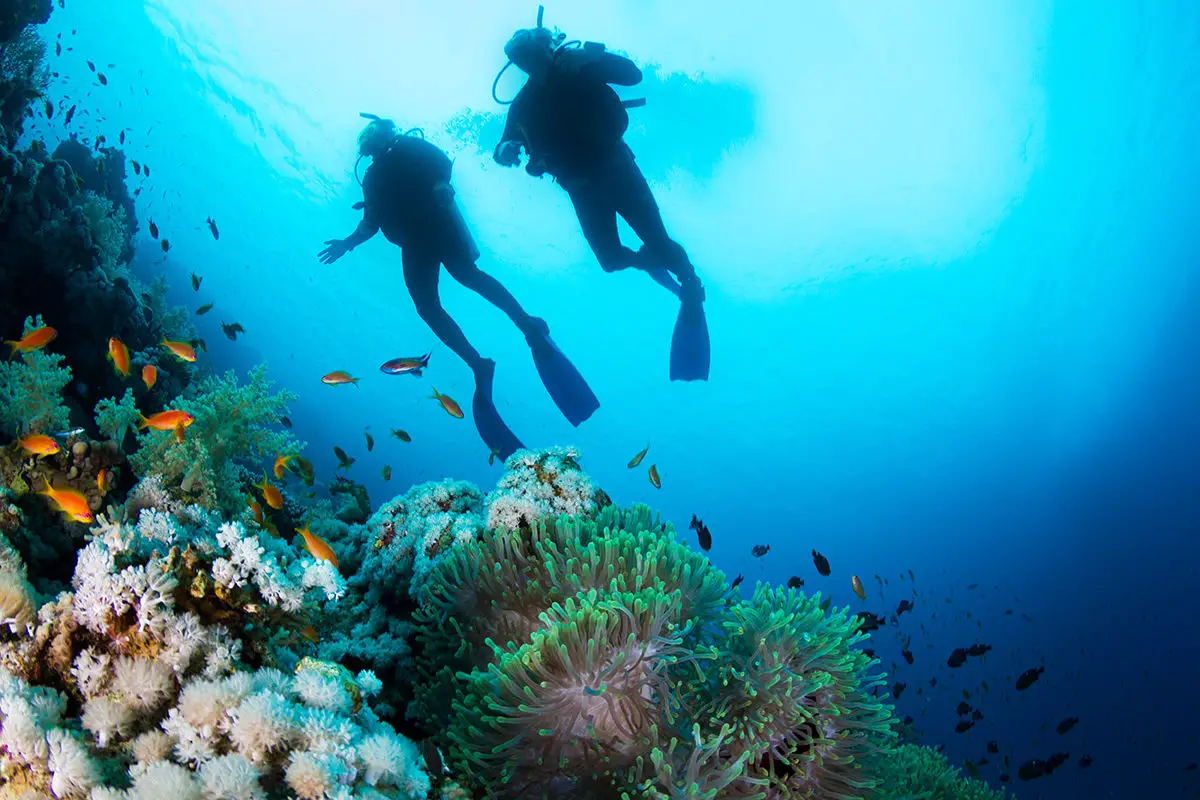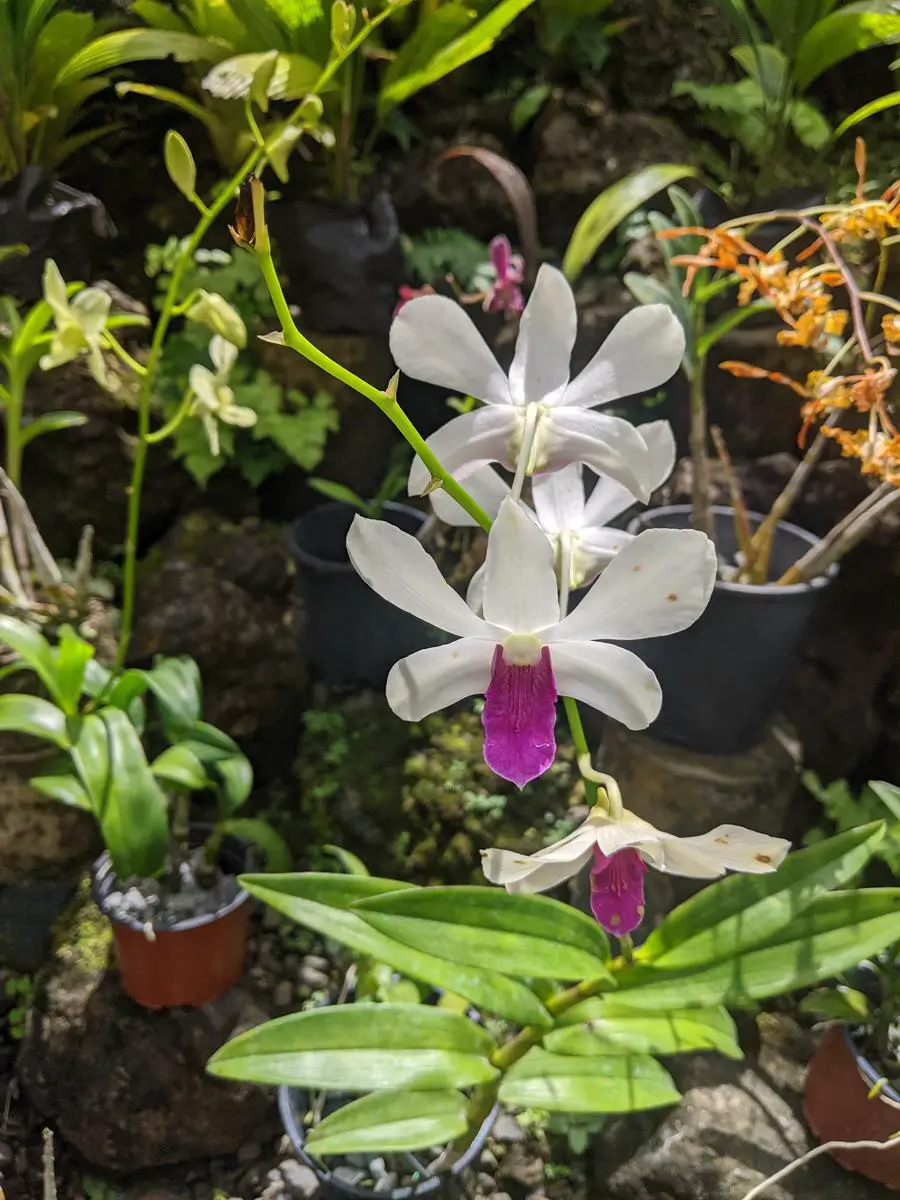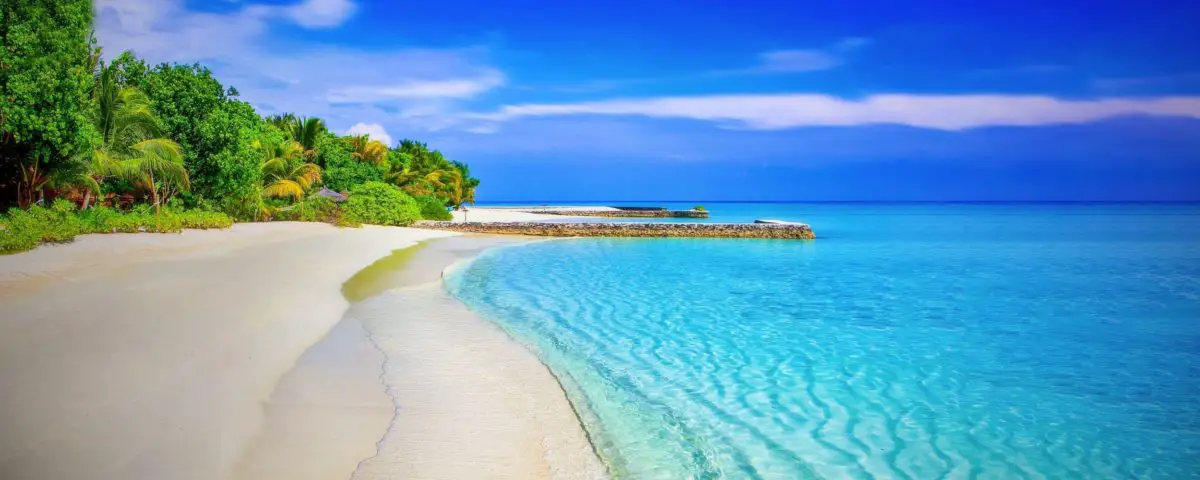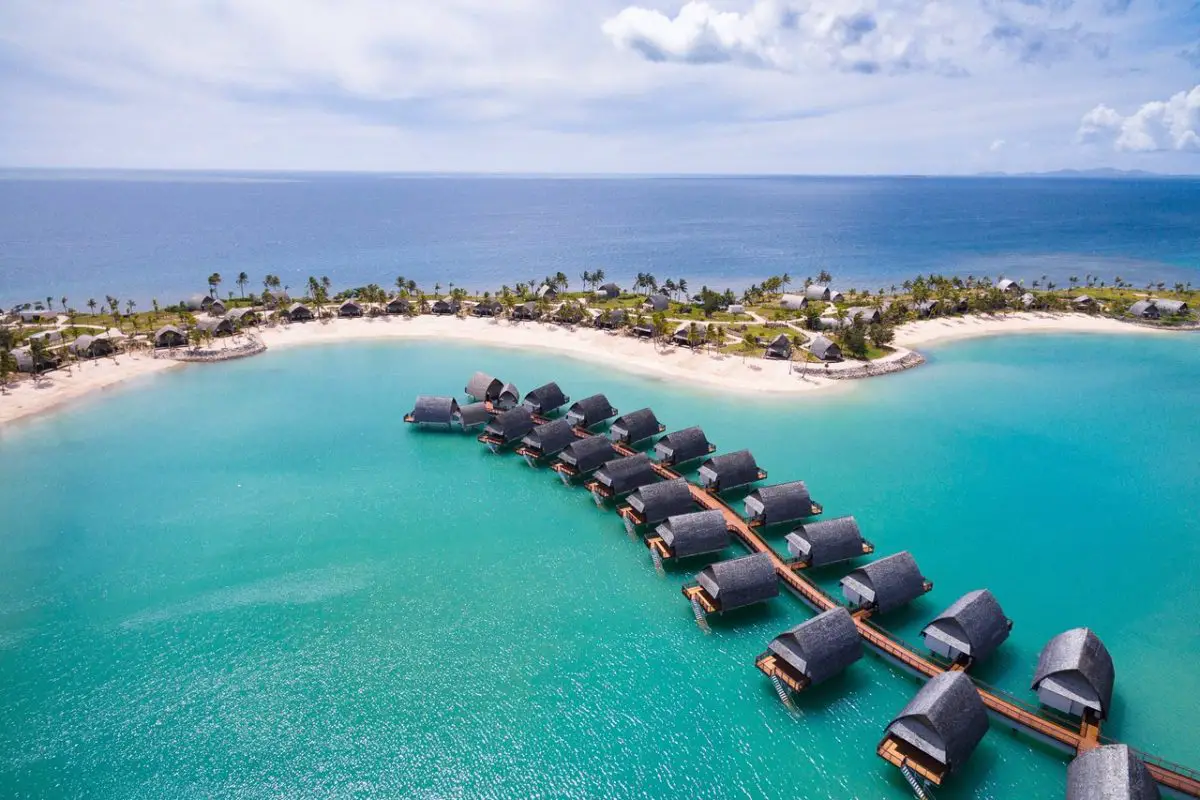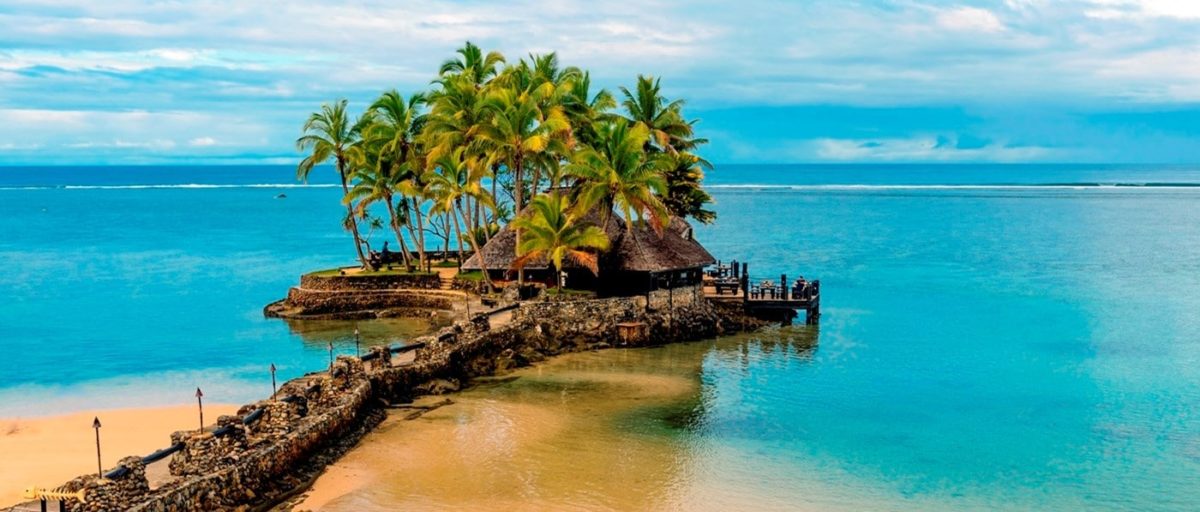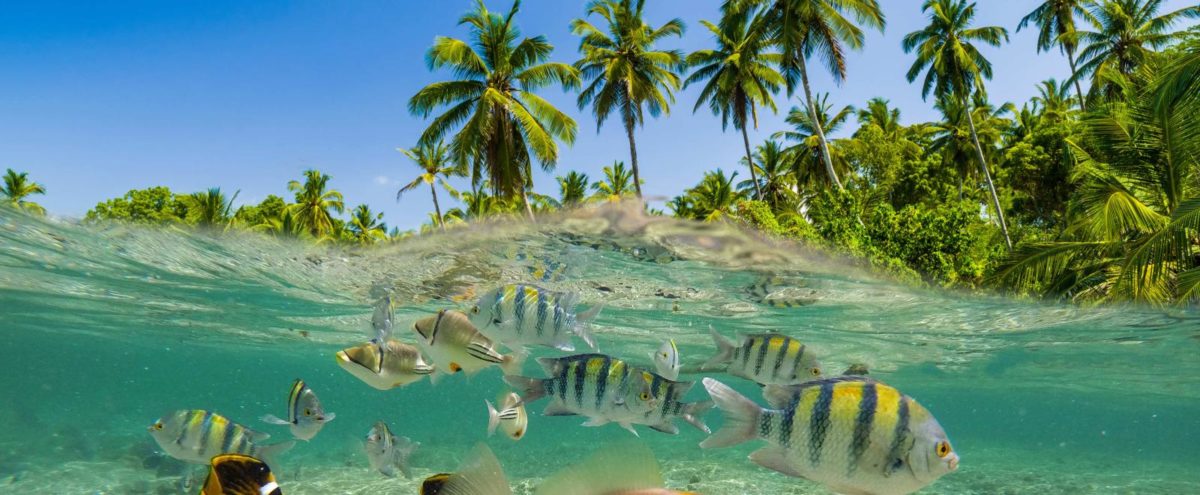Today we take a wonderful trip to the island of Fiji, we learn about its incredible beaches, tropical forests, history, activities we can do in this paradise and much more, an unforgettable destination.
Indice De Contenido
Where is Fiji Island?
Fiji Island is part of one of the most beautiful archipelagos in the world, the well known Fiji Archipelago. This beautiful place was formed as a republic barely 50 years ago, it seems like a long time, but it is a short time and it is currently developing as a nation, so it faces political and social challenges, but despite this it is still one of the most popular tourist destinations in Oceania.
When we talk about Oceania, we need to clarify that it is an island continent made up of the continental shelf of Australia, New Zealand, the islands of New Guinea and the archipelagos of Melanesia, Micronesia and Polynesia.
All of these islands are spread across the Pacific Ocean. Oceania is considered to be the smallest continent on the planet, because in reality its surface is mostly made up of islands. The Fiji Islands are located in the area called Melanesia, as they are a series of islands that do not have defined and specific borders like the borders of continental territories, which is why we have to refer to the nearby islands.
So we have to say that they are close to Papua New Guinea, Tuvalu, Samoa, New Caledonia and the Solomon Islands. The Fiji Islands are divided by their location into Northern Islands, Central Islands and Southern Islands, the Fiji Islands are more than 300 islands that make up the archipelago and the more than 500 islets that are found sharing the surface of the Pacific Ocean.
The island of Fiji is located in the South Pacific and is divided into Central Island, East Island, West Island and the Rotuma region where Motusa, the capital of Rotuma, is located. Central Island is home to Suva, the capital of the island, Levuka in the east and Lautoka in the west.
Fiji’s location in the South Pacific gives it a tropical climate, making it a tourist destination par excellence. The island is made up of several islands, of which Viti Levu and Vanua Levu are the two most important. Not all of the islands that make up the archipelago are inhabited.
The capital, Suva
The Fiji Islands have a capital city called Suva, which is the political and administrative centre of Fiji. The capital, Suva, is located south-east of Viti Levu in what is known as the central part and was established in 1877, although it is not one of the most populated islands. It covers an area of about 2,408 square kilometres.
More than an economically productive city, Suva is a city where the Pacific Banks were established, with this characteristic we must imagine that the city of Suva is the centre of economic, commercial and service activities of the island of Fiji.
It is a vibrant and hectic city that does not have many charms, but it is characterised by the fact that it is inhabited by people from different cultures that coexist in this city and give it a very special quality, making Suva perhaps not a tourist destination, but a city that cannot be missed.
When visiting the city, get to know the indigenous communities and enjoy the multicultural mix you will find in the city of Suva. Don’t forget to visit the markets, it is there that you will really get to know the culture of the city, its people, its gastronomy, its smells and flavours.
In Suva, modern buildings mix with old wooden structures, giving the city a certain charm. If you are in the historic centre of the city, be sure to visit the Cathedral of the Sacred Heart, the wooden colonial houses, the old Telegraph House and the Museum, which houses anthropological collections of the ancient populations of the islands.
History of the Fiji Islands
The Fiji Islands have a history of conflict and power struggles, making them a feisty people from the beginning. The earliest civilisations of the Fiji Islands have been identified as dating back more than 3,500 years, with the Lapita culture being one of the most representative ancient cultures.
It is said that the first settlers of the Fiji Islands came from South East Asia and populated not only the islands of the Fiji archipelago, but also extended to the island of Tuvalu, Samoa and the Solomon Islands, to name but a few. The geography of the archipelago kept them somewhat isolated and they were very territorial settlers.
It was in the 17th century that these Fijian settlers came into contact with foreigners, the first to arrive on the shores of the Fiji Islands were Europeans. The Europeans found that these tribes were almost constantly at war, and even Westerners became involved.
With the establishment of a British government in Fiji, an economic movement began to bring in Indians as labourers to improve the exploitation of sugar cane.
In the first half of the 20th century, however, there were clear clashes between the Indian population and the indigenous Fijians. Two ethnic groups were established on the island of Fiji, both seeking some form of political and economic power on the island.
In the second half of the 20th century, a struggle for independence from British colonial rule began and a new state was created, but we must not forget the conflicted coexistence between Indians and Fijians.
The first 17 years of the republic were marked by a tense calm until 1987, when the Hindu majority won the elections. Since then, Fiji’s political life has been shaken by a series of coups that have maintained political instability. The first coup established the current republic and created a constitution that emphasised efforts to ensure a level playing field between the two ethnic groups.
The most recent coup, led by Frank Bainimarama, restored democracy to Fiji and appointed Laisenia Qarase as prime minister. However, Bainimarama himself staged another coup in 2006 over the establishment of a Reconciliation and Unity Commission, which provoked a strong reaction, particularly from the military, which is led by Frank Bainimarama.
A military coup deposed the government and he established himself as the country’s de facto president. A year later, Bainimarama returned to power, with Josefa Iloilo becoming president and Bainimarama prime minister. Strategies to maintain law and order in Fiji began to be implemented, including an emergency law that could ban information deemed destabilising.
Because the prime minister was not elected and the new government refused to hold elections, Fiji was suspended as a republic from the Commonwealth, the grouping of nations that were mostly British colonies. Years of political tension and weakened international relations followed, and in 2010 elections were announced for 2014, in which Bainimarama was elected.
This call for elections restored Fiji’s diplomatic relations with neighbouring Australia and New Zealand. Fiji now has a new constitution that provides for free elections and non-discrimination between Fijian communities and the Indian minority. Political stability has led to increased foreign investment in the country, which has had a positive impact on Fiji’s development, making it one of the world’s happiest nations.
Fiji Islands
Fiji is an archipelago of over 300 islands in the Pacific Ocean. Its location in the South Pacific gives it a tropical climate, where you can find crystal clear beaches with warm waters, where incredible coral reefs are formed, which are home to countless species of marine flora and fauna.
It is a very attractive archipelago for tourism, which has become one of the main economic activities. One of the most attractive features for tourists is the prices, which are more affordable than on other neighbouring islands.
Outside of political life and the city of Suva, the island life of Fiji is actually a very relaxed and laid back part of its culture. The islands that make up the Fiji archipelago include Nadi, which is the gateway to Fiji as it is home to the international airport. Ovalau Island, which was the first island to be settled by Europeans. Levuka is a World Heritage Site.
This area has been developed for tourism. The beaches of Fiji Island have natural features where the forests frame the beautiful beaches of crystal clear water and white sand, making it a truly amazing scenery. To enjoy your visit to this paradise as much as possible and at the best price, it is advisable to buy the Bula Pass, a card that allows you to move around the island, and we will tell you about the most popular ones.
Not all the islands are just beaches, Fiji also has places for nature lovers such as Taveuni, where its robust forest offers us surprises such as beautiful waterfalls and lagoons. You can also enjoy the already famous Waiyevo Slide or the Bouma National Park, where you can still find indigenous villages that maintain their ancestral customs and you can also visit the archaeological sites.
As I always recommend, what you see is what you do, it is an old saying that means enjoy the natives, the people and their customs and fill yourself with their culture, so be sure to visit the villages and eat and enjoy what the natives do.
Turtle Island
Turtle Island is a beautiful private island, part of Yasawa Island, one of Fiji’s exclusive destinations. It will always be a little more expensive to visit, but you are also guaranteed that there will be very few people sharing the island’s attractions with you.
Yasawa Island
We could define Yasawa Island as one of the small archipelagos of Fiji, but it is important to point out that it is not the only one, but it is one of the most visited as it has a lot to offer. The islands that make up Yasawa are of volcanic origin, so there are many mountains, some reaching 600 metres above sea level.
It offers secluded beaches, very quiet and beautiful. There are also trekking opportunities, as you can make excursions into the mountains, where you will be amazed by the beautiful lush vegetation, waterfalls and natural stone slides.
Laucala Island
Laucala Island is another of Fiji’s private islands. It’s a little smaller than Turtle Island, but certainly more developed for tourism, so you’ll find a range of services that are well worth the experience. Highlights include an 18-hole golf course, horse riding, restaurants, water sports and more.
Mago Island
Part of the Lauren Islands and located to the north-east of them, it is one of the islands classified as Northern Fiji and is one of the private islands acquired by a celebrity, in this case Mel Gibson, to which his guests have access.
Manolo Island
Manolo Lailai Island is part of the famous Mamanucas Islands, which lie to the west of Viti Levu and Vanau Levu, the two main islands of the archipelago. If you want to enjoy a catamaran trip, this is one of the ways to get to Manolo Island and we assure you that you will enjoy the trip, but you should be prepared to sail for more than an hour. Once you arrive, you will be able to enjoy the beautiful beaches, excursions, spas, water sports and more.
What activities can I do on the island of Fiji?
There are many activities to enjoy on the island of Fiji, although you may think that it is only beach and sun, in reality it is not so the island of Fiji also offers an urban offer in the city of Suva, the capital which as we said has a colonial town where you can enjoy its architecture and the cultural offerings offered by the capital of Fiji Island, is also of quality. If you just want to relax and get away from it all, there are many quiet beaches where you can find peace, quiet, good food and attention.
If you are one of those people who prefer the mountains to the beach, Fiji Island also offers this option, Fiji Island is characterised by places full of lush vegetation, in an inland landscape full of nature, where you can find as areas for this type of activity the highlands of Namosi, Navala Village and the Cannibal Caves.
If adventure tourism is your thing, rafting down the Wainikoroiluva River on bamboo rafts is a real adventure. For those who like to shop and bring back gifts for family and friends, there is a range of beautiful handicrafts made by the locals.
History buffs can also visit the Naihehe Caves, where the last cannibal ceremonies were held in the mid-19th century. Fiji Island has also become a destination for celebrities who want to get away from the limelight and the paparazzi and fans, as there are private islands that allow them to do so, while meeting their needs and expectations for comfort and luxury.
As we can see, the island of Fiji is more than just beaches, although that is undoubtedly its strength, making it an excellent tourist destination. Of course, water sports activities are an option in all the destinations that Fiji Island has to offer, which we will discuss in more detail.
Scuba Diving
Scuba diving is one of the most popular aquatic activities in Fiji, an environment of crystalline waters, with beautiful coral reefs that allow you to enjoy a rich diversity of species, making the islands that make up the archipelago one of the favourite destinations for lovers of this sport.
The best thing about the island of Fiji is that you don’t have to be a professional to experience diving in its incredible waters, as the island offers exceptional services to make your first dive a safe and fascinating activity. If you’re coming to Fiji, don’t miss the opportunity to explore its depths with a professional. The variety of marine environments on Fiji Island makes it a world-class destination for diving enthusiasts, as you can enjoy caverns, drop-offs and much more.
Snorkelling
Snorkelling is another way to enjoy the marine beauty that each of the islands in the Fiji archipelago has to offer. As everyone knows, snorkelling allows you to enjoy the marine flora and fauna by observing them with partial immersion, which is very pleasant for many and an excellent option that you can enjoy on any of the beaches of Fiji Island. It is possible to hire the necessary equipment, which consists of a mask, fins, snorkel and vest, making it a safe and comfortable activity.
Garden of the Sleeping Giant
If there is one thing that tropical environments have, it is a great diversity of species, and Fiji has learned to take advantage of its natural beauty, the Garden of the Sleeping Giant. It is a beautiful place where you can enjoy a variety of plant species, including a beautiful collection of Asian orchids and Cattleya hybrids.
This collection was originally the private collection of the American actor Raymond Burr. It is now open to the public and you can take a tour of its beautiful, perfectly maintained gardens, where you can even enjoy a dense tropical rainforest.
When you visit, you will be specially guided and informed about the park, its history, how it was created and you will even learn the names of the species that are exhibited in it; it is really worth a visit.
Tifajek Mud Baths
This is a place where you can enjoy the healing thermal water and natural peeling by being covered with mud from pools specially prepared for people to bathe in before and after being covered with mud. The healing effects of the water and mud are known throughout the world, so this is a place where you can not only renew your energy and spend a special day, but also have a direct effect on your health.
Tifajek Mud Pool, offers a clean and natural place conditioned to perform a treatment that begins by filling the whole body with mud, then wait for it to dry and move to the mud pool where all the mud is removed and finally move to the pool of hot springs, natural springs for a final rinse and finish with a relaxing massage, a whole spa.
Mamanuca Islands
Mamanuca Island itself is an archipelago within the Fiji Islands archipelago, with more than 20 islands, some of which are submerged. It is an island where you can do a range of activities that will keep you entertained and make your trip truly unforgettable, the most popular of course being scuba diving, coral reef watching, canoeing, hiking and much more.
Sri Siva Subramaniya Temple
Sri Siva Subramaniya Temple is a beautiful Hindu temple located on the beautiful island of Nadi. This temple has been in existence for many years, but was revived after the Golden Jubilee celebrations in 1976. The real revival came during the Tamil Nadu government when the High Priest encouraged the temple activities.
A place of meditation and prayer, the foundations of the new temple were laid on the old site in 1976, and with the need to enlarge it, land was acquired for construction, which took several years. The new temple follows the best traditions of ancient Indian Dravidian temple architecture, as well as the principles of sacred architecture of the Vedic tradition of Vastu.
Kava Ceremony
This is a ceremony that is part of Fiji’s cultural heritage, wrapped in a beautiful story of ancient powers and gods. It is a drink made from the pepper plant known in Fiji as yagona.
There is a ritual for taking the drink in the islands. In ancient times it was the exclusive drink of chiefs, priests and elders who had high status and social recognition. Nowadays, all the mysticism associated with the drink has disappeared and it is consumed by everyone without any special occasion. However, it is still possible to experience the kava ceremony, although it is more of a tourist attraction than a ceremonial one.
The best beaches in Fiji
The island of Fiji is undoubtedly a paradisiacal place, full of beautiful attractions in which nature prevails and makes this place an unavoidable destination, one of its main attractions are its beautiful beaches, white sands, crystalline waters, bordered by lush vegetation in which palm trees prevail. Its diverse coral reefs are a paradise for lovers of diving and snorkelling.
Being an archipelago, there are many beaches for locals and visitors to enjoy, but as always there are some that are more popular than others and here is a brief review of some of the most popular and visited beaches.
Castaway Island
Castaway Island is actually called Qalito Island, but became popular with the name Castaway due to the construction and presence of a resort called Castaway on the island. Castaway Island has the typical Fijian characteristics of crystal clear water and white sand. It has beautiful coral reefs that invite you to snorkel and enjoy the warm water and beautiful marine life.
Natadola Beach
Natadola Beach is located on one of Fiji’s largest islands, Viti Levu. It has been the site of several resorts, but the beauty of this beach is not diminished by the presence of concrete monsters. It is one of the most popular surfing beaches, so if surfing is your sport or you want to learn to surf during your holiday, this is the beach for you.
Long Beach
This beautiful beach is located north of Kadavu, in the north of Fiji Island, and its great attraction is that it is a long beach that allows for a delightful walk along its white sands and is also one of the most popular beaches for diving.
Matamanoa Island
Matamanoa is one of the most exclusive and private islands in Fiji, with all the necessary infrastructure to spend pleasant moments with your partner or family. It has beautiful beaches and all the facilities for water activities. Matamanoa Island is located on Mamanuca Island.
Vatulele Island
Vatulele Island is the largest island in the Fiji Islands archipelago, covering an area of 32 square kilometres and is located south of Viti Levu Island. It is one of the populated islands, but the peculiarity of Vatulele is the establishment of four villages. Famous for its large and revered red prawns, it is also home to the makers of tapa cloth, the cave paintings of Fiji Island and one of Fiji’s most exclusive resorts.
Features of Fiji Island
Many know Fiji as the island of the cannibals, but in fact it was an ancestral tribal practice in which they believed that eating part of their enemy’s corpse would allow them to gain knowledge from them, as well as being the greatest insult of all.
This practice dates back more than 2,500 years and is supported by anthropological evidence that suggests torture as a practice. Although a common practice among the tribes of Fiji, in the 19th century an act of cannibalism was perpetrated on an English missionary and his disciples on the island of Viti Levu, specifically in the village of Nabutautau.
It may be seen as a cruel murder, but he was a Fijian chief who refused to believe in any god but his own, so to him the missionary Thomas Baker, as he was called, was an enemy and enemies were killed and cannibalised according to his customs. Of course, this event marked the end of this practice, it was a time of change and colonisation and it is said that the village was cursed because of this event.
In early 2003, the chief’s family apologised to the missionary’s family and performed a healing ritual. This ancient practice is now a tourist attraction and has become a feature of the island of Fiji. Another feature of the Fiji Islands, as we have already mentioned, is the presence of a tropical climate, beautiful beaches of crystal clear water and white sand, with incredible and diverse coral reefs.
As for the vegetation, it is made up of beautiful and lush forests with a great variety of species, where orchids are one of the main attractions for botany lovers. Of course, the great diversity of aquatic life is another of Fiji’s outstanding features.
The Climate
As mentioned above, Fiji’s climate is classified as tropical, with temperatures ranging from 20°C to 30°C depending on the two seasons of the year when the lowest and highest temperatures are recorded. The two seasons are the rainy season, which lasts from December to April, and the dry season, which begins in May and ends in October. The rainy season can lead to the formation of tropical cyclones.
Flora and fauna of the island of Fiji
The presence of a tropical climate with periods of rain and high humidity favours the establishment of forest vegetation, while differences in altitude and areas of lower rainfall allow the presence of vegetation formations such as savannah and scrubland. On the coast there is a combination of arboreal vegetation where palm trees predominate.
In terms of fauna, the diversity of birds is a detail to highlight, where more than 100 species of birds have been identified, also the diversity of reptiles is important in Fiji Island. Of course, the diversity of aquatic fauna is important, with coral reefs and the presence of mammals such as dolphins. There are also turtles, sharks and many colourful species of fish that grace the crystal clear waters of the islands.
If you have enjoyed this article, we invite you to continue reading with the links we recommend below:
-
- Whitsunday Island
- Langkawi Island
- Faroe Islands

